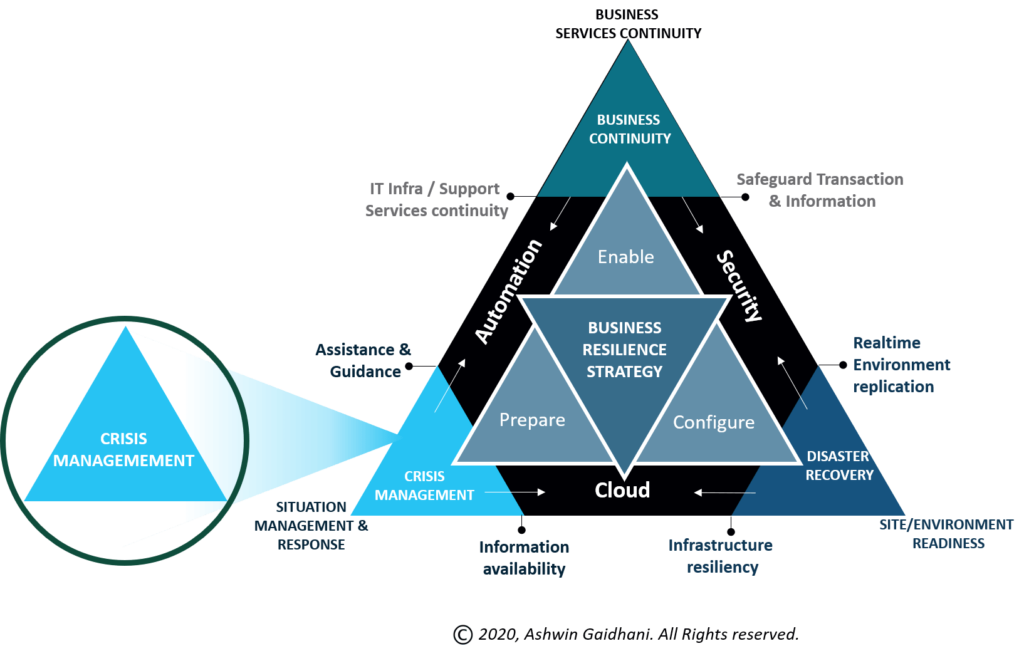
3rd Cornerstone of Business Resiliency: CRISIS MANAGEMENT
Crisis management is a heuristic way of familiarizing unanticipated situations to restrain damage with maximum efficacy and sail through with an orchestrated set of activities. This response is dependent on several factors that provide insights into character, attribute, and impact. Our prior experience, surrounding knowledge, and aptitude for assessing the situation has been directing us to take appropriate action. Crisis builds and equips you with some contextual understanding for the next unseen crisis. One can only be prepared for such situation but and can never anticipate one, which makes it even more necessary to keep your act together and start getting ready for the surprise.u
The situation gets perplexing when a crisis is upon an organization, market, community, or larger entities. It involves diverse stakeholders and consequential actions in a sequence to safeguard logical, physical, and digital assets.

Business resilience is all about the cognitive response and educated evaluation with the support of technology to ensure swift action. We have to configure technology in a way it can play the assistors’ role. Tasks that are directive in nature and have a set path with the defined outcome can be treated by AUTOMATION. The most crucial document or artifact is Crisis Manual. The repository and guide of everything, business, process, technology, stakeholder, and everything around it. This information will make the concluding decision of whether a crisis can be handled or lead to a more chaotic situation. Such documentation can always reside on CLOUD in a DDL (Definitive Document Library) with verified and authorized access. Last but not least, the SECURITY aspect to cover the operating & functioning systems that hold business, technology, technology, and customer data, which are a susceptible target in such situations.

Many aspects calibrate the method to act in a crisis. It is about engaging the right people, Relevant and timely response about the situation to the impacted audience, invoking the correct protocols, and finally, escalation when you seek the involvement of authority to make a decision when they are out of control. All these constituents backed by technology will help you to be there in the vortex of crisis and still manage it effectively.
The crisis is a very conclusive exercise to recognize and record the collaboration between ecosystems comprising internal and external leadership, vendors’ ecosystem, and the right skilled resources. Information availability can accelerate this process exponentially and prevent additional damage or impact. A crisis can be localized, centralized, or distributed and, at the same time, personal, professional, or social. In any case, appropriate response and meticulous execution can save the day when you know how to put technology to work.



Leave a Reply
You must be logged in to post a comment.